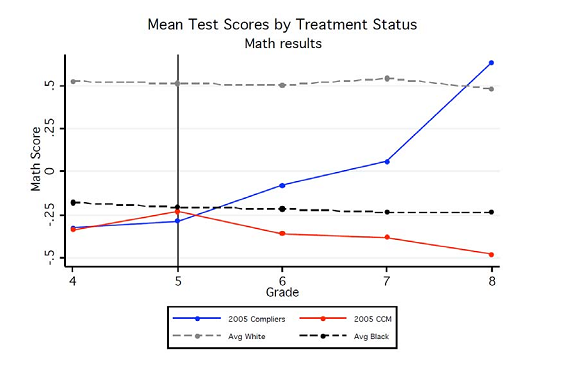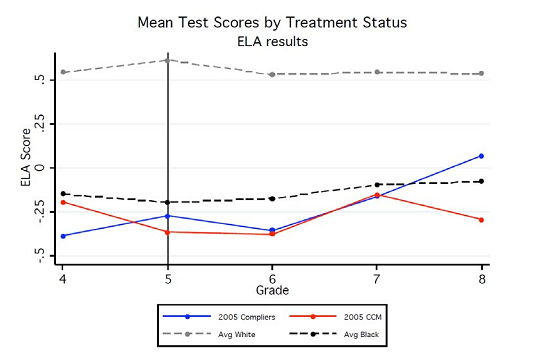Education used to be my favorite cause. My enthusiasm waned as I saw both the cost-effectiveness of international aid and the apparent futility of education. (Elie’s 2007 post captures many of my thoughts.) The study that I’ve been blogging about today (here and here) provides a firmer grounding for our optimism about high-intensity charter schools, and challenges the idea that there aren’t good opportunities for donors in education.
However, I’m still not ready to prioritize education again, personally. One of the things that surprised me most in studying education was not just the difficulty in finding programs that could improve academic performance, but also the complete lack of rigorous evidence that education is key to later life outcomes. I would be fascinated to see a rigorous study of how the students who benefit from excellent charter schools perform later in life – in terms of income, job satisfaction, criminal records, etc. Without evidence, I’m not convinced that raising a child’s math score raises their life prospects, especially in a way that goes beyond “signaling” (i.e., allowing them to outcompete other people due to a superior credentials).
Would putting every child in America in a good school that makes sure they can do math lead to a much better society? I used to assume it would; I’m no longer so sure, and recent information doesn’t change that.
For now, I’m going to wait and see. I’d like to see the academic reaction the Fryer and Dobbie paper on the Harlem Chilren’s Zone. If others agree about the rigor and significance of its findings, I’d like to see who steps forward to continue replicating and examining this approach. The Social Innovation Fund would seem to be one strong candidate.
In the meantime, I’m going to be putting my own money into programs that are proven and replicable and don’t have enough funding – things like tuberculosis control and distribution of insecticide-treated nets.
Perhaps, at some point, I will feel that there is an education program that meets all three of these criteria as well. At that point I may start giving to it, even if it’s many times as expensive per person as developing-world aid.
Related posts:


